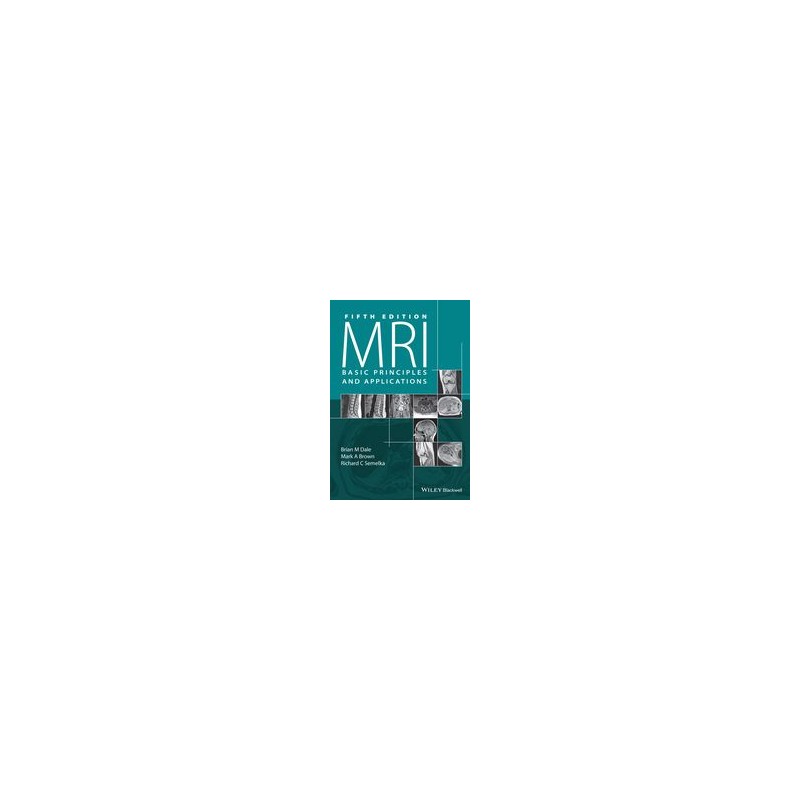- Obniżka


 Dostawa
Dostawa
Wybierz Paczkomat Inpost, Orlen Paczkę, DHL, DPD, Pocztę, email (dla ebooków). Kliknij po więcej
 Płatność
Płatność
Zapłać szybkim przelewem, kartą płatniczą lub za pobraniem. Kliknij po więcej szczegółów
 Zwroty
Zwroty
Jeżeli jesteś konsumentem możesz zwrócić towar w ciągu 14 dni*. Kliknij po więcej szczegółów
Opis
Preface, ix
ABR study guide topics, xi
1 Production of net magnetization 1
1.1 Magnetic fields 1
1.2 Nuclear spin 2
1.3 Nuclear magnetic moments 4
1.4 Larmor precession 4
1.5 Net magnetization 6
1.6 Susceptibility and magnetic materials 8
2 Concepts of magnetic resonance 10
2.1 Radiofrequency excitation 10
2.2 Radiofrequency signal detection 12
2.3 Chemical shift 14
3 Relaxation 17
3.1 T1 relaxation and saturation 17
3.2 T2 relaxation, T2* relaxation, and spin echoes 21
4 Principles of magnetic resonance imaging – 1 26
4.1 Gradient fields 26
4.2 Slice selection 28
4.3 Readout or frequency encoding 30
4.4 Phase encoding 33
4.5 Sequence looping 35
5 Principles of magnetic resonance imaging – 2 39
5.1 Frequency selective excitation 39
5.2 Composite pulses 44
5.3 Raw data and image data matrices 46
5.4 Signal-to-noise ratio and tradeoffs 47
5.5 Raw data and k-space 48
5.6 Reduced k-space techniques 51
5.7 Reordered k-space filling techniques 54
5.8 Other k-space filling techniques 56
5.9 Phased-array coils 58
5.10 Parallel acquisition methods 60
6 Pulse sequences 65
6.1 Spin echo sequences 67
6.2 Gradient echo sequences 70
6.3 Echo planar imaging sequences 75
6.4 Magnetization-prepared sequences 77
7 Measurement parameters and image contrast 86
7.1 Intrinsic parameters 87
7.2 Extrinsic parameters 89
7.3 Parameter tradeoffs 91
8 Signal suppression techniques 94
8.1 Spatial presaturation 94
8.2 Magnetization transfer suppression 96
8.3 Frequency-selective saturation 99
8.4 Nonsaturation methods 101
9 Artifacts 103
9.1 Motion artifacts 103
9.2 Sequence/Protocol-related artifacts 105
9.3 External artifacts 119
10 Motion artifact reduction techniques 126
10.1 Acquisition parameter modification 126
10.2 Triggering/Gating 127
10.3 Flow compensation 132
10.4 Radial-based motion compensation 134
11 Magnetic resonance angiography 135
11.1 Time-of-flight MRA 137
11.2 Phase contrast MRA 141
11.3 Maximum intensity projection 144
12 Advanced imaging applications 147
12.1 Diffusion 147
12.2 Perfusion 153
12.3 Functional brain imaging 156
12.4 Ultra-high field imaging 158
12.5 Noble gas imaging 159
13 Magnetic resonance spectroscopy 162
13.1 Additional concepts 162
13.2 Localization techniques 167
13.3 Spectral analysis and postprocessing 169
13.4 Ultra-high field spectroscopy 173
14 Instrumentation 177
14.1 Computer systems 177
14.2 Magnet system 180
14.3 Gradient system 182
14.4 Radiofrequency system 184
14.5 Data acquisition system 186
14.6 Summary of system components 187
15 Contrast agents 189
15.1 Intravenous agents 190
15.2 Oral agents 195
16 Safety 196
16.1 Base magnetic field 197
16.2 Cryogens 197
16.3 Gradients 198
16.4 RF power deposition 198
16.5 Contrast media 199
17 Clinical applications 200
17.1 General principles of clinical MR imaging 200
17.2 Examination design considerations 202
17.3 Protocol considerations for anatomical regions 203
17.4 Recommendations for specific sequences and clinical situations 218
References and suggested readings 222
Index 225
